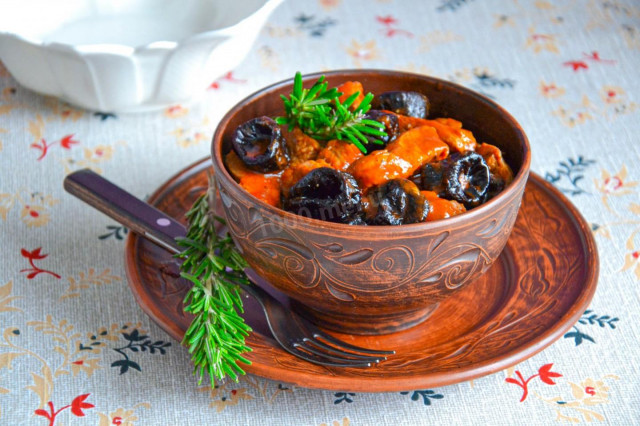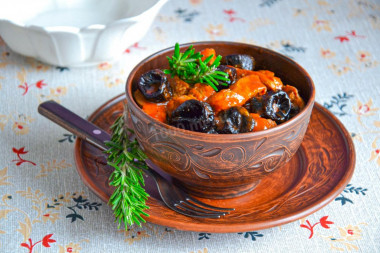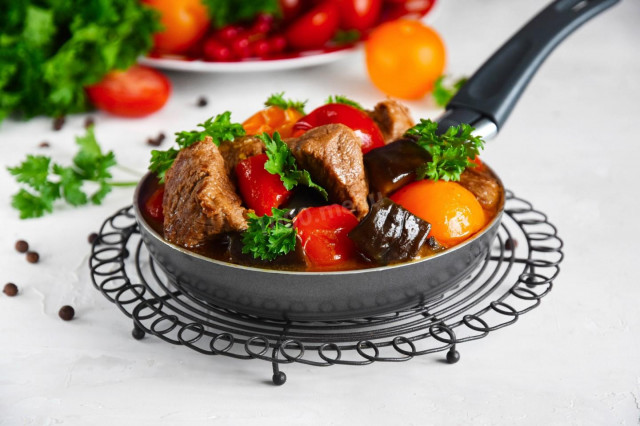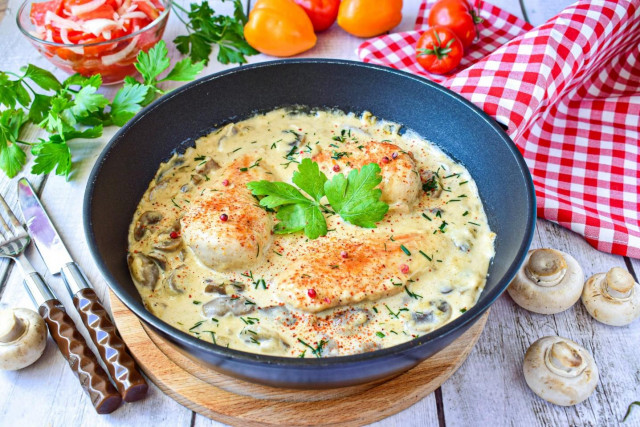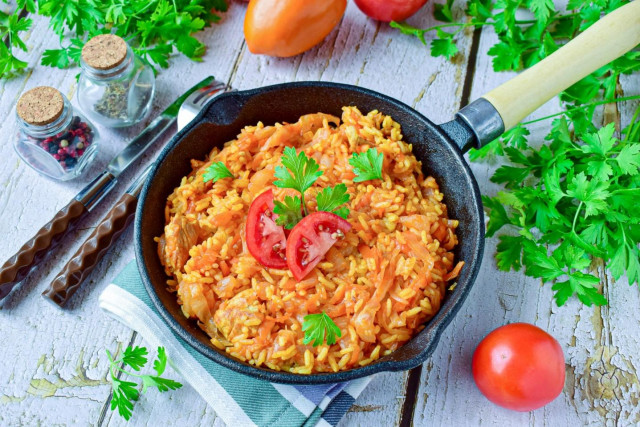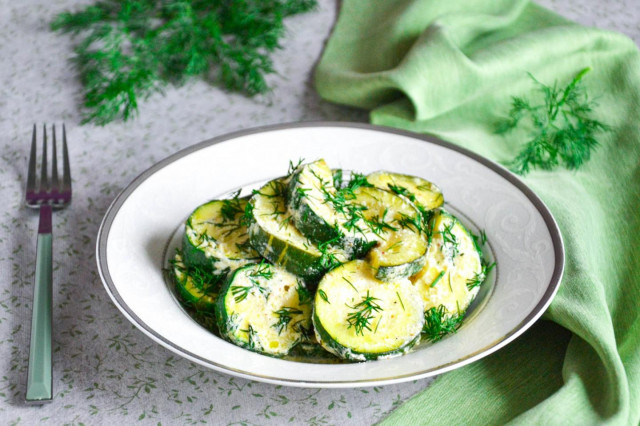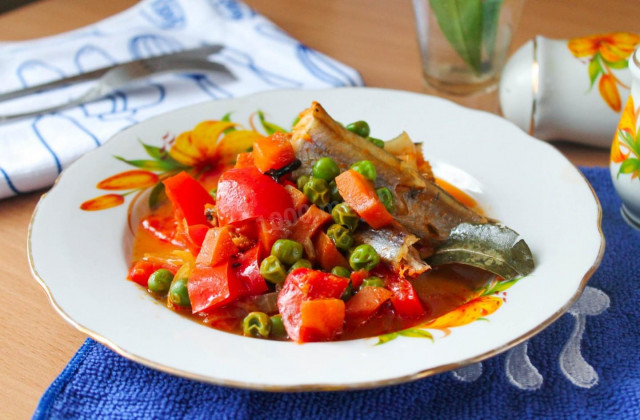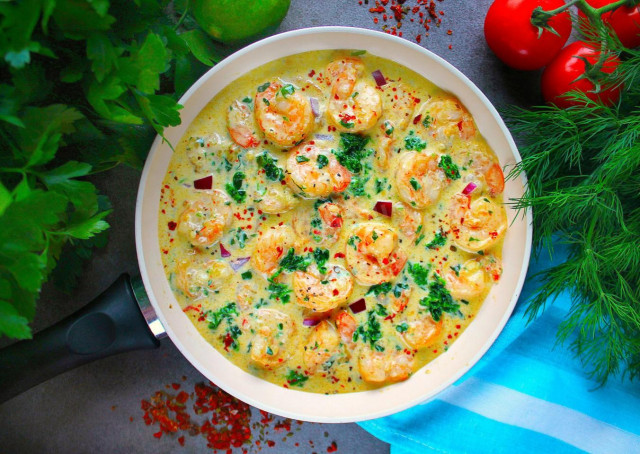Composition / ingredients
Step-by-step cooking
Step 1:
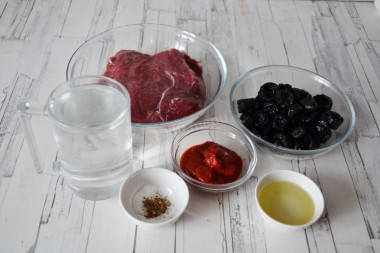
How to put out beef with prunes? Prepare the ingredients. If your meat has been frozen, then pre-defrost it by transferring it from the freezer to the bottom shelf of the refrigerator. Prunes are better suited sweet, without seeds. Of the spices, I used only salt and pepper, but you can also add any others to your taste. Tomato paste can be replaced with ground fresh tomatoes, pre-blanched and peeled.
Step 2:
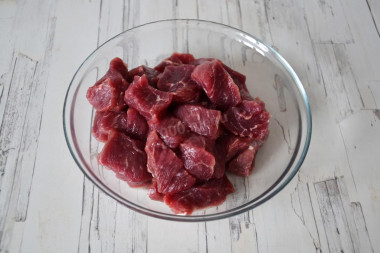
Wash the beef and be sure to dry it with a paper towel, otherwise excessive moisture will not allow it to fry. Cut the meat into medium cubes.
Step 3:
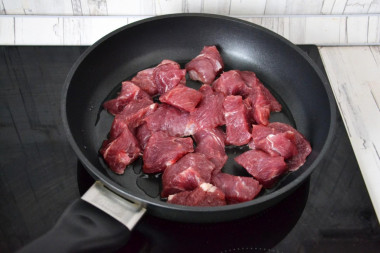
Heat the vegetable oil in a frying pan. Put the beef in the pan. Fry it over medium heat, stirring with a spatula, until all the released juice evaporates.
Step 4:
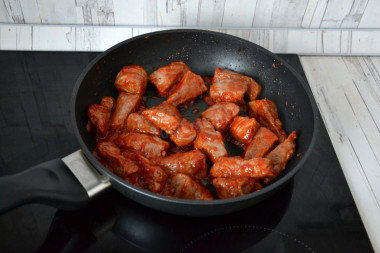
Add tomato paste and mix quickly.
Step 5:
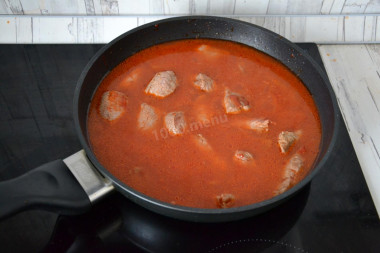
Pour water into the pan so that the liquid almost completely covers the meat. Bring it to a boil, reduce the heat to a minimum. Simmer the meat under the lid for about 1 hour.
Step 6:
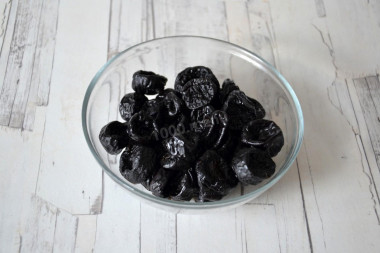
Prepare the prunes. Wash it thoroughly and dry it. It is better to take large pitted prunes - it has more sweetness and less sourness.
Step 7:
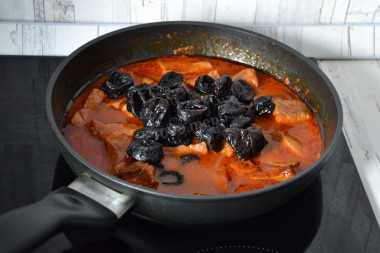
Put the prunes in the pan, stir. Simmer for another 10-20 minutes until the meat is fully cooked — it should be soft. If necessary, add a little boiling water. At the end of stewing, a little gravy should remain in the pan. The stewing time will directly depend on what kind of beef you had, on its quality and the part of the carcass from which the piece was taken.
Step 8:
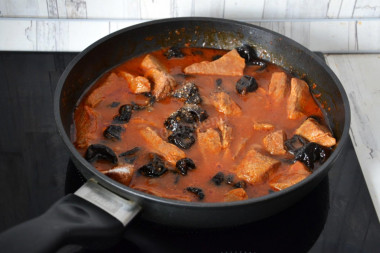
At the very end, season the beef with prunes with salt and pepper. Mix everything and remove the pan from the heat. The dish, in principle, does not require an additional side dish — prunes perfectly cope with this role. But if you wish, you can serve stewed meat with mashed potatoes or pasta.
In the recipe of beef stew with prunes, there is both a slight sourness, and the sweetness of plums, and a barely perceptible note of spicy cinnamon.
Note that the quality and taste of the finished dish largely depends on the proper defrosting of the ingredients. How to avoid mistakes and choose the best way, read the article about defrosting.
Beef can be replaced with any other type of meat that you like best. But keep in mind that the cooking time, as well as the taste and calorie content of the dish will change. Pork and lamb tend to be fatter than beef, and chicken fillet or turkey are leaner. At the same time, the cooking time depends not only on the type of meat, but also on which part of the carcass is used and how old or young the meat is.
For cooking, it is better to use filtered or bottled water that is neutral to taste. If you use tap water, keep in mind that it can give the dish an unpleasant characteristic taste.
Caloric content of the products possible in the composition of the dish
- Melted beef fat - 871 kcal/100g
- Fat beef - 171 kcal/100g
- Lean beef - 158 kcal/100g
- Beef brisket - 217 kcal/100g
- Beef - okovalok - 380 kcal/100g
- Beef - lean roast - 200 kcal/100g
- Beef shoulder - 137 kcal/100g
- Beef - ribs - 233 kcal/100g
- Beef - ham - 104 kcal/100g
- Beef - tail - 184 kcal/100g
- Boiled ham - 269 kcal/100g
- Beef corned beef - 216 kcal/100g
- Ground black pepper - 255 kcal/100g
- Prunes - 227 kcal/100g
- Vegetable oil - 873 kcal/100g
- Tomato paste - 28 kcal/100g
- Salt - 0 kcal/100g
- Water - 0 kcal/100g

